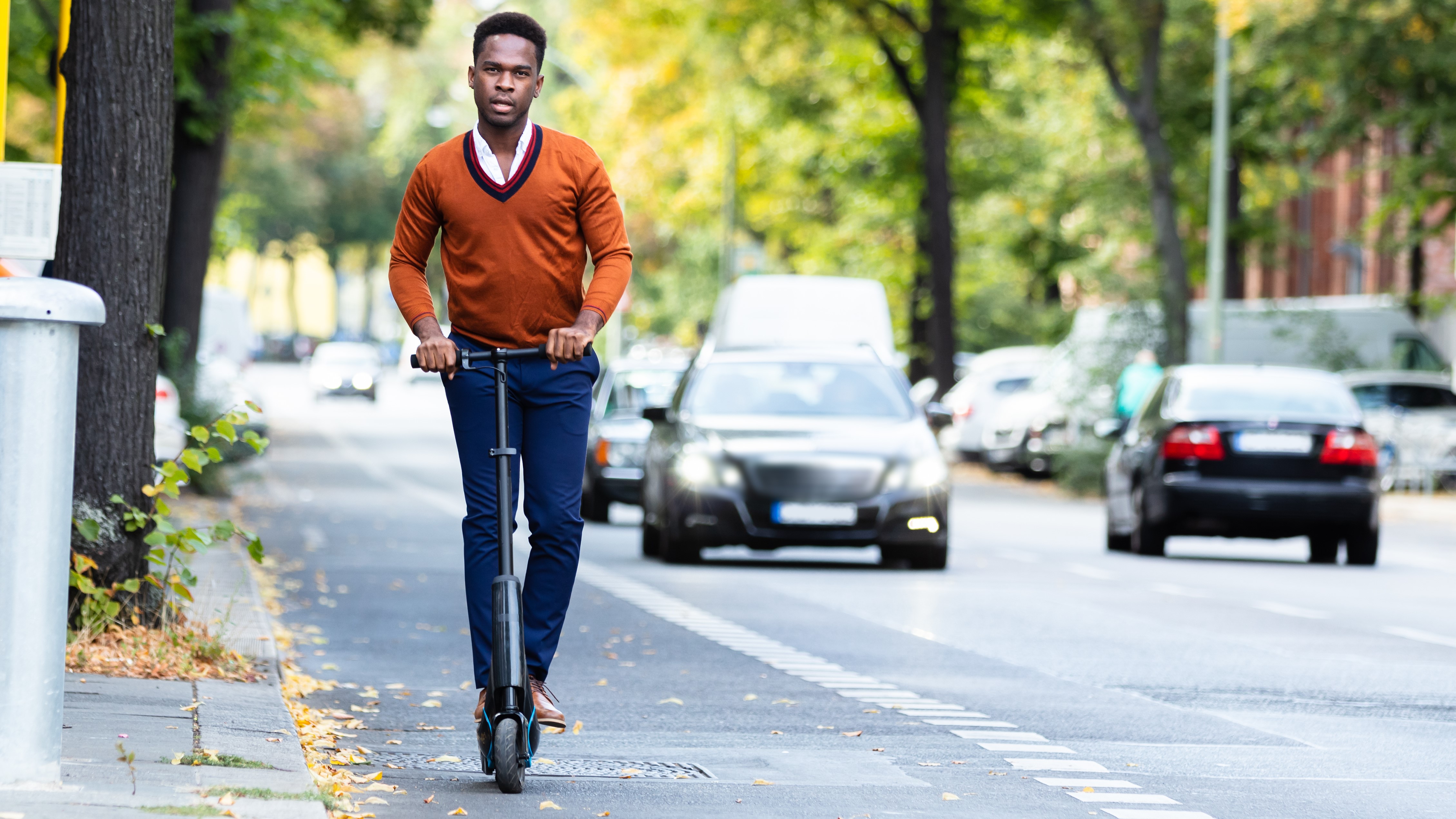
Electric scooter trials are due to begin in cities throughout the UK very soon, but the rules will be pretty strict, requiring all drivers to own a driving licence, and not everyone is happy about the idea of rented two-wheelers on the streets at all.
The government classes electric scooters as "active travel", along with walking and cycling, and in May announced that it was moving the date of planned trial schemes forward from 2021 to 2020 to help encourage people to choose greener, healthier transport options as we emerge from coronavirus lockdown.
The proposed rules for riders would limit scooters to roads and cycle lanes, and require at least a provisional driving licence. This would restrict their use to people aged 16 and over. Helmets would be recommended, too.
- Check out our roundup of the best electric bikes
- We've also listed the best electric scooters available today
- The electric bikes that could genuinely replace your car
While about 20 local authorities have put their names forward for the trials, not everyone has welcomed the idea, and as Forbes reports, the Parliamentary Advisory Committee for Transport Safety (PACTS) has taken a particularly dim view of the government's plans.
PACTS is an informal cross-party group dedicated to examining transport safety, made up of members of the House of Commons and House of Lords. It doesn't have official government status, but is a way of bringing together people particularly interested in the topic.
One of PACTS' main problems with the planned hire schemes is that members of the public will see them as an opportunity to start riding their own scooters as well, which would throw off the results of the trials.
The government's current proposals would limit rented e-scooters to a maximum speed of 12.5mph, a maximum weight of 35kg, and only two wheels, but many electric scooters currently on sale don't fit those limitations. The Xiaomi M365 (one of the world's most popular electric scooters) has a top speed of 15mph.
Get daily insight, inspiration and deals in your inbox
Sign up for breaking news, reviews, opinion, top tech deals, and more.
The final scheme may increase this limit to 15.5mph, but this would still be below the top speed of many commercially available scooters. For example, the Inokim Light 2 can reach 21mph.
The trials are also intended to limit the number of scooters in use within a particular area, which would be skewed by private ownership.
How active is 'active'?
PACTS' statement goes on to make the point that riding an electric scooter basically involves pushing off with one foot, then standing still and using a throttle to control speed, which is far less 'active' than walking, cycling, or using an electric bike (which under current laws must be pedal-assisted).
"In addition, e-scooters are a hazard for pedestrians," the group says. "E-scooters are often used on the footway (pavement) and in other pedestrian areas – legally in some countries, illegally in others. We see this already in the UK, despite their illegality here."
Full details of the government's framework for electric scooter trials are due to be announced at the end of this month, and it will be interesting to see whether these address any of PACTS' concerns. We'll keep you updated once we know more.
- The best fitness tracker 2020: the best activity bands on the planet

Cat is TechRadar's Homes Editor specializing in kitchen appliances and smart home technology. She's been a tech journalist for 15 years, having worked on print magazines including PC Plus and PC Format, and is a Speciality Coffee Association (SCA) certified barista. Whether you want to invest in some smart lights or pick up a new espresso machine, she's the right person to help.